#franz weihmayr
Explore tagged Tumblr posts
Text
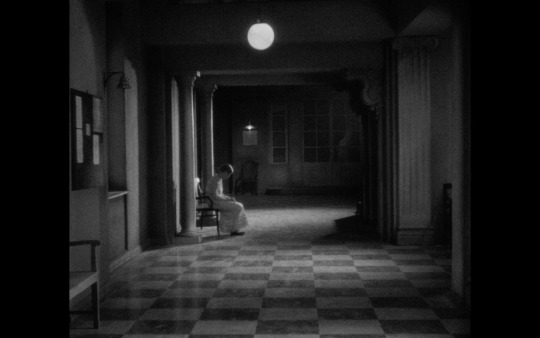
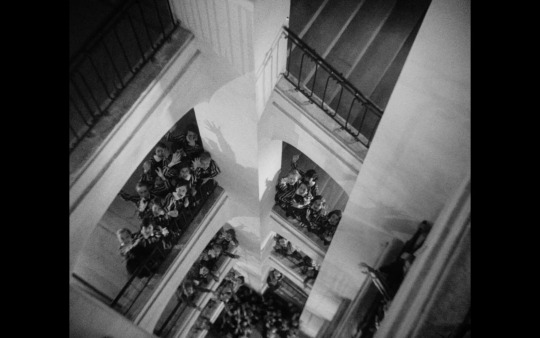
Mädchen in Uniform (1931), directed by Leontine Sagan, cinematograhpy by Reimar Kuntze and Franz Weihmayr
#Mädchen in Uniform#Leontine Sagan#German film#1930s movies#cinema#cinematography#black and white#queer cinema
13 notes
·
View notes
Text
Dread by the Decade: Fährmann Maria
👻 You can support me on Ko-Fi! ❤️

★★★
Plot: A young ferryman must outwit Death after ushering him across the river.
Review: While not of the highest technical quality, this film carries an undeniable charm with its parable-like structure and expressionistic visuals.

English Title: Ferryman Maria Year: 1936 Genre: Supernatural Horror, Historical Romance Country: Germany Language: German Runtime: 1 hour 23 minutes

Director: Frank Wisbar Writers: Frank Wisbar, Hans-Jürgen Nierentz Cinematographer: Franz Weihmayr Editor: Lena Neumann Composer: Herbert Windt Cast: Sybille Schmitz, Aribert Mog, Carl de Vogt, Peter Voß, Karl Platen

------
Story: 3/5 - Effectively dream-like, though it struggles somewhat with too slow pacing.
Performances: 3.5/5 - Nothing incredible, but Mog's fever scene is quite good, and Schmitz plays gentle and kind well with minimal dialogue. Voß is unsettling as Death.
Cinematography: 4/5 - Uses harsh shadows and weird close-ups to great effect.

Editing: 3/5 - Some cuts feel a bit delayed.
Music: 4.5/5 - Possibly my favorite part of the film. At points, it's genuinely unsettling and almost experimental.
Sets: 2.5/5
Costumes, Hair, & Make-Up: 3/5 - Simple. Mog's sweat and make-up for the fever sequence is striking.
youtube
Trigger Warnings:
Brief sexual harassment
#Fährmann Maria (1936)#Fährmann Maria#Ferryman Maria (1936)#Ferryman Maria#Frank Wisbar#German#supernatural horror#historical romance#Dread by the Decade#review#1930s
6 notes
·
View notes
Photo

- You must come to your senses. You must recover, whatever it takes. - Recover? From what? - You're not allowed to love me... so much.
Mädchen in Uniform, Leontine Sagan (1931)
#Leontine Sagan#Christa Winsloe#Friedrich Dammann#Hertha Thiele#Dorothea Wieck#Ellen Schwanneke#Emilia Unda#Hedy Krilla#Reimar Kuntze#Franz Weihmayr#Hanson Milde Meissner#Oswald Hafenrichter#1931#woman director
63 notes
·
View notes
Photo
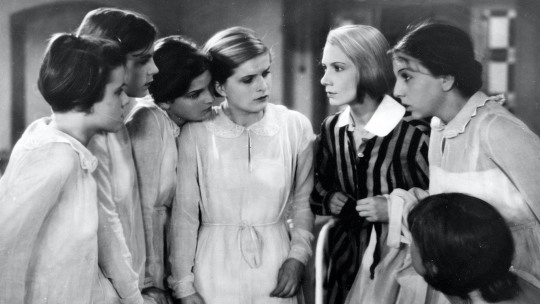
“Women Make Film” marathon reviews (1/6)
Mädchen in Uniform (1931, Germany)
By 1931, Germany stood at the brinks of history. Its harsh treatment by World War I’s victors and economic depression compelled some German politicians to channel wells of hatred for political expedience. In two years’ time, Weimar Germany would be transformed by the Nazi Party. Between 1918 and 1932, Germany’s cinema had flourished. The lack of money flowing into its industry inspired the creation of an array of genres and bold filmmaking styles, filmmakers working in innovative ways to express complicated ideas. German Expressionism – pairing wildly distorted geometric environs with plotlines on dark topics – is the most famous style of this era, even if it was not the most popular among German audiences during this time. Inspired by New Objectivity (films that focused on post-WWI middle class despair), though not an example of this movement, Leontine Sagan’s Mädchen in Uniform is one of the final great films of this period and a landmark piece of queer cinema. Mädchen in Uniform unleashed a final, rebellious roar against the authoritarian ideas that would overtake Germany.
Fourteen-year-old Manuela von Meinhardis (Hertha Thiele) is the new student at an all-girls boarding school helmed by Fräulein von Nordeck zur Nidden (Emilia Unda). Her father is a military officer who is barely home; her mother passed away when she was much younger. The staff seize Manuela’s belongings and outfits her in a vertical-striped uniform. Is this a school, a military barracks, or prison? In this sprawling complex with well-manicured grounds and Greco-Roman-inspired columns, its students march in rows of two, their transgressions receiving demerits from the staff. Beneath the regimentation, Manuela finds a welcoming, supportive culture among her fellow girls. Each teacher is responsible for their respective dormitory wing, and Manuela is assigned to Fräulein von Bernburg (Dorothea Wieck). Some of Manuela’s first greeters openly express their crush on the young von Bernburg – who kisses her students on the forehead good night.
At the end of her first day, Manuela is understandably still feeling nervous about whether she will adjust to life at this school. But lo and behold, Manuela, rather than a “good night” kiss on the forehead, receives a kiss on the lips from Fräulein von Bernburg. Manuela’s crush spirals into love for her schoolteacher, leading to an accidental climax that upends the school’s veneer of discipline and emotional/sexual repression.
In this boarding school, the students are starving for affection. The teachers address students by their surnames; they drill them in prim and proper womanhood daily. Letters to and from the outside world are verboten, nor are pictures of men. And in such a world, there is obviously no room for queerness, let alone any teenage romantic longing. But among the students, there is a crackling energy that abides despite the heavy-handed administration. That same energy sees numerous girls admit their attraction to others of the same gender to their classmates – even being selectively out to a trusted few is courageous, regardless of the era. Sagan and screenwriters Christa Winsloe (adapting her own stage play) and Friedrich Dammann (1951’s Happy Go Lovely) make no secrets that the film sympathizes with Manuela and her schoolmates. Emotional and sexual repression in the boarding school – and, by extension, the Germany of the near future – uphold the patriarchal norms and power structures espoused by the headmistress. Though the girls may not pull demeaning pranks or verbally abuse the headmistress and her deputies behind their backs (the stuff of rapidly dating 1980s American high school-set films), they actively undermine her stifling authority where possible – a veiled remark, disobedience.
Emilia Unda is fantastic in her role as the headmistress, a Prussian acting in a stereotypically militaristic manner. Hers is the performance of the film. But the headmistress cannot shape these young women alone, and that is where Dorothea Wieck’s Fräulein von Bernburg comes in. Von Bernburg has several interactions with Manuela – alone, among students and faculty – where it is clear she treads carefully between acting upon her feelings and exemplifying the professional values a teacher must maintain. During her classes with Von Bernburg, Manuela is unable to concentrate on her studies. In a post-class meeting, Manuela tearfully admits the following:
MANUELA: When you say goodnight and leave, and shut the door to your room, I stare at the door in darkness. I want to get up and come to you, but I know that I can’t. And I think of when I get older and have to leave the school and every night you will kiss other girls – FRÄULEIN VON BERNBURG: – What thoughts you have. MANUELA: – I love you so much… (...) FRÄULEIN VON BERNBURG: … Well, child, control yourself… You know I can’t make exceptions or the other girls will be jealous. I think of you often, Manuela.
Fräulein von Bernburg clearly has affection for her shy student – in facial expressions, in physical interactions, and off-screen actions (classmate Ilse, played by Ellen Schwanneke, tells Manuela after the latter was the star of the school play: “[Fräulein von Bernburg] didn’t say a word. But she watched you. You can’t imagine how closely she watched you.” Never does von Bernburg say she does not share, to some extent, Manuela’s feelings. Those who might deny those romantic undercurrents are ignoring that, as the film progresses, Mädchen in Uniform is absent any heterosexual baiting (if it wasn’t obvious by now, there is not a single male character in the film; this is eight years before George Cukor’s The Women) or implication among either character. Von Bernburg, acting on the behest of the headmistress, is as much an enforcer for the repressive school administration as she is a victim. To make things even more visually ambiguous, Thiele and Wieck are the same age – the film does an adequate job to make Thiele seem somewhat younger than Wieck, but it is obvious the actresses playing the schoolgirls are much too old for boarding school. Von Bernburg is aware of her status as a romantic interest of multiple students. This knowledge manifests itself in behavior alternatively disciplinarian and flirtatious (after comforting Ilse in one scene, Von Bernburg pats her bottom softly) – a challenge to the ethics of traditional student-teacher relationships.
Mädchen in Uniform does not have the production qualities of other German films of its era. Some of the editing can be rough; it is too easy to distinguish between the talents of the professional and non-professional actors (most of the students are played by non-professionals). However, cinematographers Reimar Kuntze (1938’s Carmen, la de Triana) and Franz Weihmayr (1936’s Ferryman Maria) use facial close-ups that are startling because of the film’s overwhelming proportion of medium shots. These sparingly-utilized close-ups contain the film’s emotional outbursts – whether for the purposes of liberation or repression – and intensify the effect. And though it may not be a German Expressionist film, Mädchen in Uniform also makes do with creative lighting. Paired with the black-and-white film, soft lighting is often present when Fräulein von Bernburg is in the frame – especially when she is with Manuela. Those scenes are laden with romantic tension, of actions and words withheld. Horizontal and vertical lighting and production design (from Fritz Maurischat and Friedrich Winckler-Tannenberg) emphasize the confining nature of this boarding school. In the film’s closing minutes, a camera pointed sharply downward into a stairwell breaks the viewer’s visual expectations in a scene of emotional chaos.
In the United States, the Motion Picture Production Code (also known as the Hays Code, this was a set of self-censorship guidelines for the film distribution) would not be fully enforced until 1934. But even in this pre-Code era of lax enforcement, Mädchen in Uniform was too much for the film censors. This distribution limbo would be broken by no less than Eleanor Roosevelt. Roosevelt exerted her influence as First Lady to secure for Mädchen in Uniform a limited release in the U.S. Back in Europe, the Nazi Party banned Leontine Sagan’s film shortly after they took power, despite the film toning down some of the lesbian themes from the stage play. Numerous cast and crew were Jewish, did not flee Germany, and were killed in concentration camps. The original stage play’s author, Christa Winsloe, was a lesbian herself – fleeing Germany for France in the late 1930s. For director Leontine Sagan, she directed two more films in Men of Tomorrow (1932) and Showtime (1946) after moving to Britain. She would remain there through World War II, until moving to South Africa and cofounding the National Theatre in Johannesburg.
Sagan would not live to see Mädchen in Uniform take its place in film history. Its potential popularity among LGBTQ+ viewers would be blunted for decades, due to the lasting popularity of Josef von Sternberg’s The Blue Angel (1930) in the queer community. The film existed in heavily edited prints until the 1970s. Germans would not be able to see the film unedited until a 1977 television airing. The fact that Mädchen in Uniform is a queer film favorite should not inspire hesitation for viewers who may think that this film is not “for them”. At its most basic level, this is a (mostly) spirited movie about a young girl’s search for belonging and nurturing. It captures the confusion and uncertainty of being a teenager (one attracted to others of the same gender, at that) and the thrill of having people who support you because of who you are. How fortunate that, despite the efforts of those who wanted to prevent audiences from seeing it, Mädchen in Uniform is now regarded as the classic that it is.
My rating: 9/10
^ Based on my personal imdb rating. Half-points are always rounded down. My interpretation of that ratings system can be found in the “Ratings system” page on my blog (as of July 1, 2020, tumblr is not permitting certain posts with links to appear on tag pages, so I cannot provide the URL).
For more of my reviews tagged “My Movie Odyssey”, check out the tag of the same name on my blog.
NOTE: This is the first of an unspecified amount of film reviews on this blog relating to films that I saw as part of Turner Classic Movies’ (TCM) Women Make Film marathon.
#Madchen in Uniform#Mädchen in Uniform#Leontine Sagan#Hertha Thiele#Dorothea Wieck#Emilia Unda#Hedwig Schlichter#Ellen Schwanneke#Erika Mann#Gertrud de Lalsky#Christa Winsloe#Friedrich Dammann#Reimer Kuntze#Franz Weihmayr#Women Make Film#TCM#My Movie Odyssey
38 notes
·
View notes
Photo




Mädchen in Uniform (1931)
DoP: Reimar Kuntze & Franz Weihmayr
Dir: Leontine Sagan
#madchen in uniform#girls in uniform#leontine sagan#german films#reimar kuntze#franz weihmayr#film stills#cinematography
10 notes
·
View notes
Photo










Liebe '47 (Wolfgang Liebeneiner, 1949).
#wolfgang liebeneiner#liebe 47#love 47#love 47 (1949)#dieter horn#hilde krahl#franz weihmayr#walter von bonhorst#walter haag#hans kutzner
56 notes
·
View notes
Photo






mädchen in uniform (ger, sagan 31)
#mädchen in uniform#leontine sagan#carl froelich#dorothea wieck#hertha thiele#Reimar Kuntze#Franz Weihmayr
25 notes
·
View notes
Photo
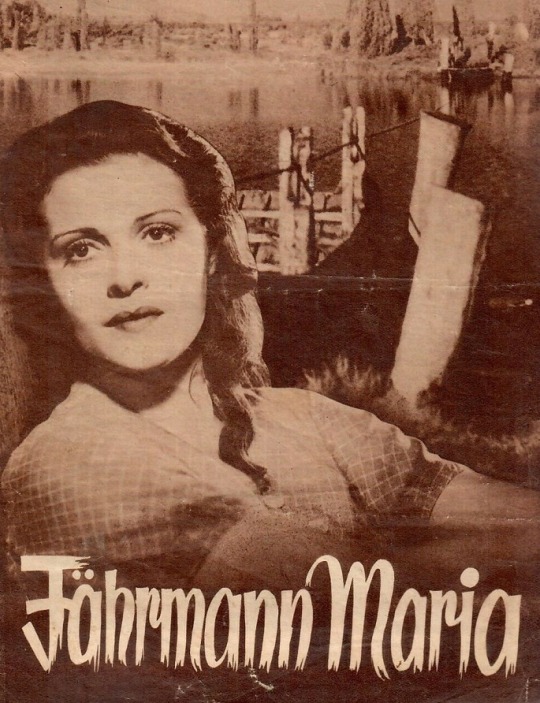
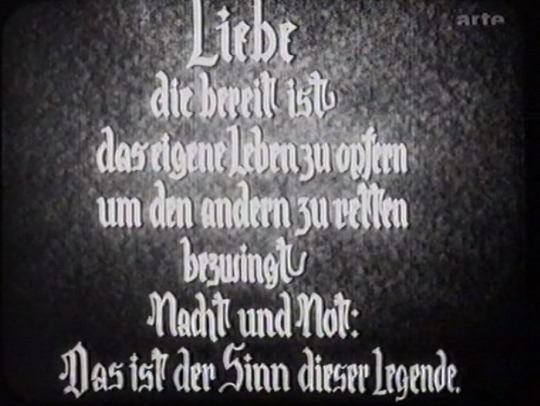
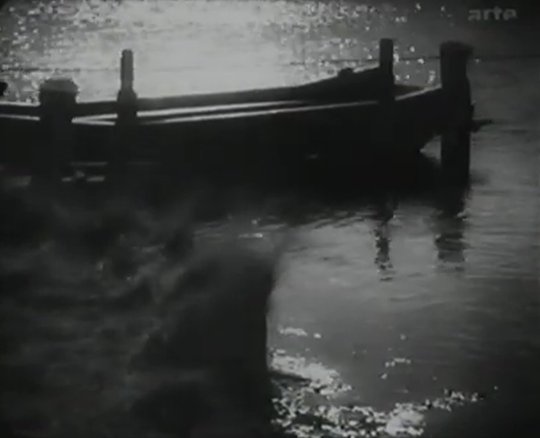
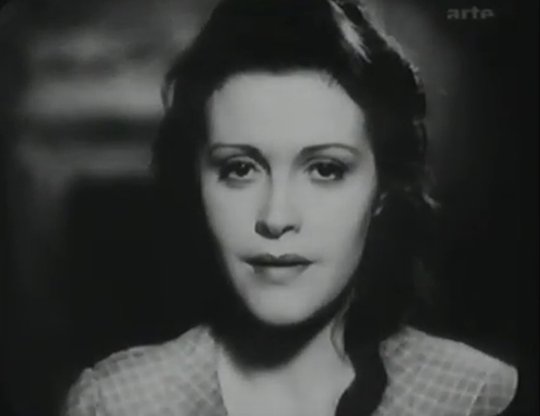

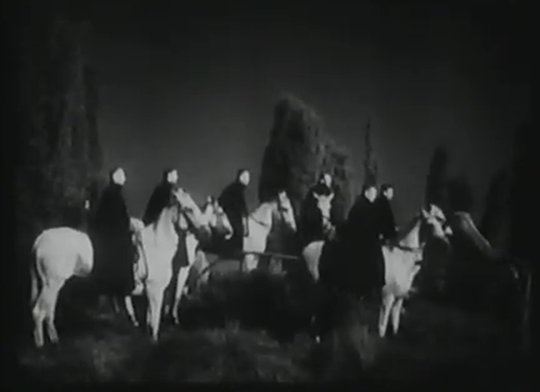
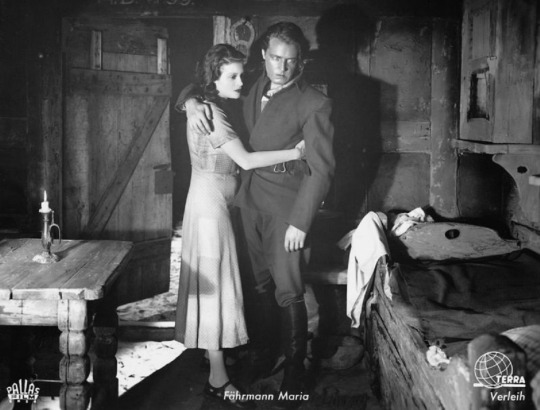
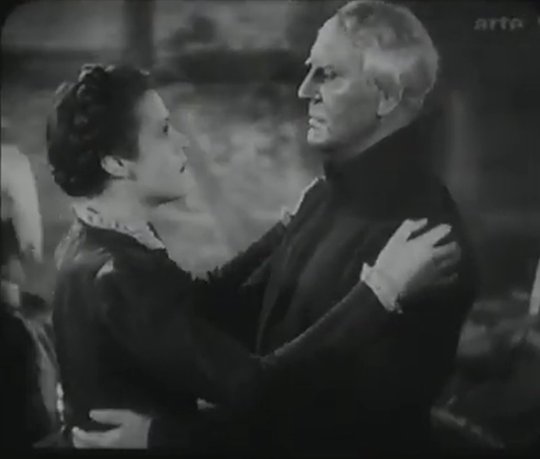
“Fährmann Maria” (1936) von Frank Wisbar
Ein beschauliches Dorf in idyllischer Heidelandschaft zu einer nicht genannten Epoche. Der alte Fährmann (Karl Platen) wird zu nächtlicher Stunde durch das Schlagen einer Pflugschar vom anderen Ufer zu seinem Dienst gerufen. Ein gänzlich in Schwarz gewandeter Fremder (Peter Voß) von düster-respektheischendem Auftreten begehrt vermeintlich, den Fluß zu überqueren. Statt dessen ist Gevatter Tod erschienen, um den alten Mann mit sich zu nehmen. Niemand weiß, woher die herb-schöne Maria (Sybille Schmitz) in das Dorf gekommen ist. Auf ihre Bitte um eine Erwerbstätigkeit hin überträgt man ihr das vakante Amt des Fährmanns, das niemand aus der abergläubischen Einwohnerschaft übernehmen möchte. Eines Nachts ertönt die Pflugschar, und Maria findet einen verletzten jungen Mann (Aribert Mog). Maria nimmt ihn in ihrer Hütte auf und will ihn gesund pflegen. Der Fremde erzählt von einer kriegerischen Auseinandersetzung in seiner Heimat und dass er sich seinen Verfolgern durch die Flucht entziehen konnte. Zwischen den Beiden entsteht ein innige Liebe. Doch kurz darauf erscheint der Tod, um das Leben des jungen Mannes zu fordern ... Aufgrund seiner wenigen gesprochenen Worte und der dafür umso intensiveren Bildsprache wähnt sich der Zuschauer in “Fährmann Maria” in einem späten Nachfolger der deutschen Stummfilmklassiker der Weimarer Republik. Die Atmosphäre dieses Klassikers schlägt den Zuschauer förmlich in seinen Bann vor allem die stimmungsvolle Kameraarbeit von Franz Weihmayr, die spannungsgeladene Musik von Herbert Windt sowie die darstellerischen Leistungen von Sybille Schmitz und Peter Voß. Den besonderen Reiz des Films macht die märchengleich-parabelhafte Handlung aus, die an Klassiker wie "Der müde Tod" von Fritz Lang gemahnt jedoch ohne dessen tragisch-schicksalhaftes Ende zu übernehmen. So weiß der Zuschauer beispielsweise nie mit Gewissheit, ob die schwarzgewandeten Reiter auf ihren weißen Pferden die den Protagonisten verfolgen, tatsächlich oder lediglich in dessen Phantasie existieren. Wohltuend dem damals propagierten, vorsintflutlichen Frauenbild entgegenwirkend agiert die wie stets mysteriös sowie trotz aller Sanftheit selbstbewusst und stark erscheinende Sybille Schmitz als Maria, auch wenn man die zunächst ungebändigt mit offenem Haar und legerer Kleidung erscheinende junge Frau später in ein strenges Kleid steckt und sie sich einen fatal an die NS-Frauenschaft erinnernden Haarkranz flicht. Die in der Kräuterheilkunde bewanderte junge Frau pflegt ihren Geliebten, vermag eine gefahrenvolle Situation rational zu analysieren statt überstürzt zu reagieren wie der Fremde es tut, und sie ist es, die schließlich durch die Kraft ihrer Liebe den Tod zu bezwingen vermag. Der von Aribert Mog verkörperte junge Mann, der schon aufgrund seines krankheitsbedingten Leidens der deutlich schwächere Part des Paares ist, äußert sich hingegen vorzugsweise zu heimatlicher Scholle und zum Kampf gegen diverse Feinde. Als er einen Rückfall erleidet und im Fieberwahn lautstark ein Kriegslied von sich gibt, wird nicht eindeutig ersichtlich, ob sich Maria aufgrund ihrer Todesangst um den geliebten Mann so entsetzt oder ob des martialischen Gesangs. Neben dem schauspielerisch eher blassen Mog und Gerhard Bienert als beschränktem und übergriffigem Gutsherrn ist der imposante Peter Voß als “Freund Hein” der einzige adäquate männliche Widerpart zu Sybille Schmitz. Anders als Bernhard Goetzke, dem er in Aussehen und Physis durchaus ähnelt, ist Voß kein “müder Tod” sondern erbarmungslos und herrisch in seinem Auftreten. Die Szenen, in denen Maria um das Leben ihres Geliebten fleht und sich selbst als Opfer anbietet, was der Tod konsequent ablehnt, sind von Schmitz und Voß hervorragend gespielt, doch die gelungenste Passage ist eindeutig der Totentanz der Beiden.
youtube
#fährmann maria#sybille schmitz#peter voß#aribert mog#frank wisbar#deutsches kino#deutsche schauspieler#german cinema#german actors
5 notes
·
View notes
Photo







Madchen in uniform (1932) Dir: Carl Froelich / Leontine Sagan Dop: Reimar Kuntze / Franz Weihmayr
1 note
·
View note
Photo

Mädchen in Uniform (Leontine Sagan & Carl Froelich, 1931).
#mädchen in uniform (1931)#hertha thiele#leontine sagan#carl froelich#reimar kuntze#franz weihmayr#oswald hafenrichter
29 notes
·
View notes